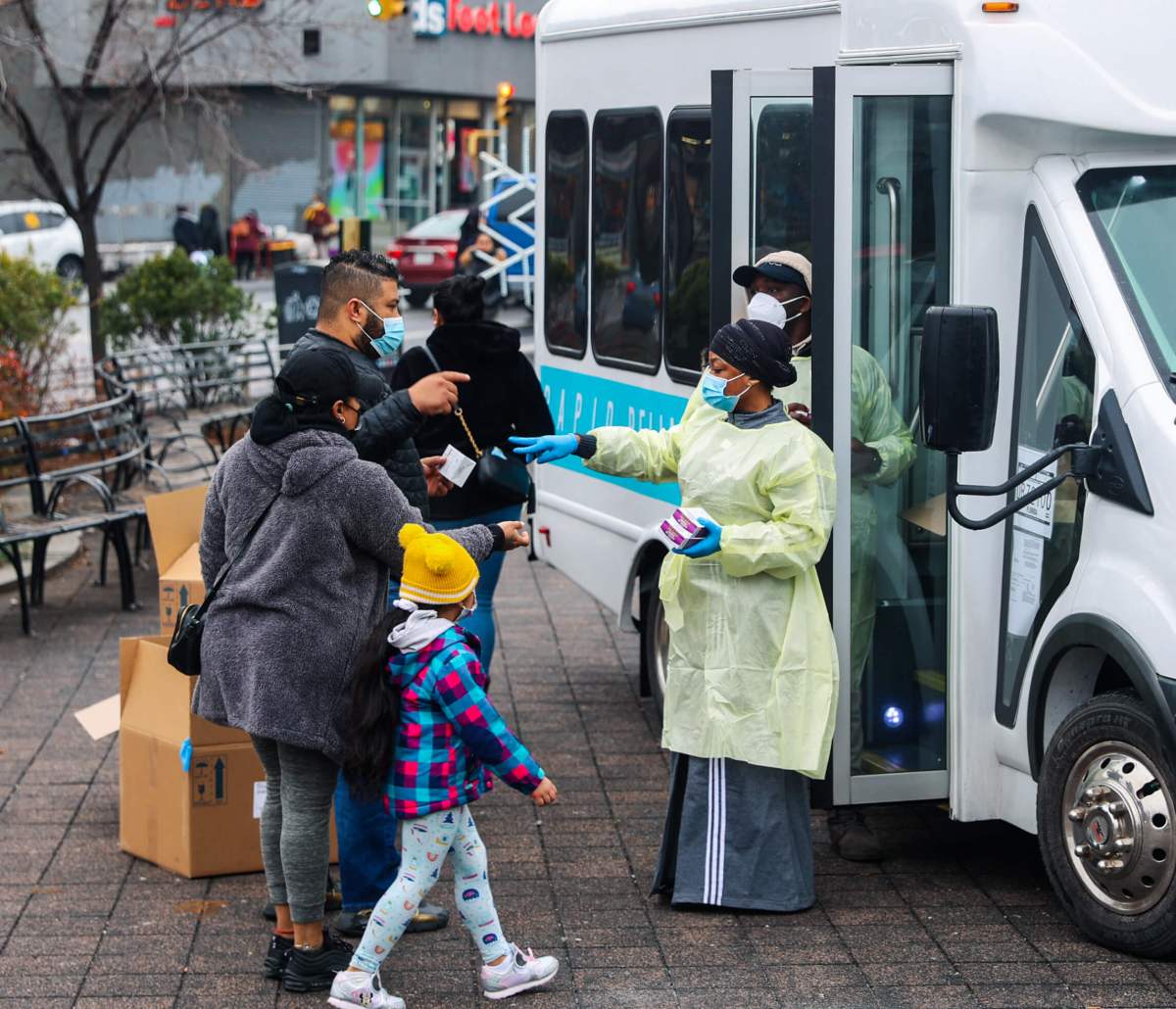BY JESSICA PARKS
Brooklyn’s 300,000-plus public school students started remote learning this week, marking an enormous shift in the city’s education system — and parents and teachers have been working overtime to help bring the classroom into students’ homes.
“[It’s] a new reality for the 1.1 million students and families in New York City,” said Mayor Bill de Blasio. “We are literally flying the plane as we’re building the plane. So, not everything is going to go 100 percent as plan, but that’s okay because we’ll figure it out together.”
While parents prepped their homes for learning, public school teachers had just three days of training before they were required to take their classrooms online on March 23 in an effort to promote social distancing amid the novel coronavirus outbreak — and, while students may have enjoyed a week-long hiatus from class the week prior, vacation is definitely over.
“We are holding the children accountable. We are not saying ‘you are off now, you are on vacation,’” said Mario Caggiano, a union chapter leader and physical education teacher at Coney Island’s I.S. 303. “The children have to check in by 9 am, so we know they are online, they are engaged, [and] they are learning.”
Educators have taken up technology like the video-conferencing platform Zoom to help teach students new material, and online apps like Google Classroom to assign and grade work — despite the rapid tectonic change, the new system is working well, said Caggiano.
“I am proud of all my teachers, they are trying their best to make it as close as possible in an environment to the classroom,” he said. “The response from the kids has been great, they want to learn and want to do lessons.”
But while the system is working as well as could be expected, it’s not without flaws.
Caggiano worried that the prolonged out-of-classroom experience, which de Blasio predicted would last through the end of the school year, would cause some students to get behind on their formative schooling.
“I am actually worried that a lot of students will fall through the cracks, and they won’t get the education they deserve and they will be very, very behind,” Caggiano said, “because they will not be doing all the work, and not understanding a lot of it.”
Some 300,000 students in the New York City public school system do not have an internet connection at home or a device to access the internet, Schools Chancellor Richard Carranza said Monday, and even though the Department of Education has issued over 175,000 devices — including both iPads and laptops — in an effort to close the gap, some students were still waiting to receive their devices days into the transition.
“We did sign up for a remote device and we have not gotten it. On Monday, they told us they are still waiting on the devices,” said Shaquana Boykin, who is the guardian of a student enrolled at Brooklyn Community Arts and Media High School in Bedford-Stuyvesant.
Without the device, the high-schooler has had to switch between her smartphone and Boykin’s laptop — which she also needs for work, but teachers offered an improvised option, Boykin said.
“If I am using the laptop, and she can’t do the multiple-choice, her teacher said she could screenshot on her phone and email it to them and they could grade it that way,” she told Brooklyn Paper.
Education advocates lamented that the current crisis further emphasizes a need for educational resources for lower-equity students, who may regularly lack things like an internet connection, a laptop, or even adult supervision.
“Unfortunately, the pandemic reveals new challenges, but to existing problems. There is a realization that not all children have the same tools available to them,” said Shelley Pasnik, the director of the Center for Children and Technology in Manhattan.
Missing classroom time or being unable to complete assignments will only further the inequality of education for these vulnerable students.
“Every day of education matters. We know that students who are homeless, and students in foster care have worse educational outcomes than their peers — they are already less likely to be proficient in reading, and more likely to drop out of school,” said Randi Levine, a policy director with Advocates for Children of New York. “So, we do worry that any further gap in their education is going to set them further behind.”
Pasnik suggested reaching students through more accessible and free networks — such as broadcasting teachers on a public media channel, or having students tune in to a lesson on the radio — which would provide a helpful means of information delivery, and allow teachers to be sources of comfort for students.
“It is also [about] the relationship teachers have with students,” Pasnik said. With proper access to remote learning, she said, students are able to remind themselves, “this is my teacher who knows me and cares about me and wants me to feel okay.”
In the same breath, educators, parents, experts, and advocates have all agreed that the fundamental piece to facilitating a successful learning environment for a student at home is for parents and guardians to play an active role in their children’s education.
“We have to do our best to make sure that parents are involved with their children’s education,” Caggiano said. “It’s always a partnership. Without the parents, it’s very difficult.”
This story first appeared on brooklynpaper.com.






































